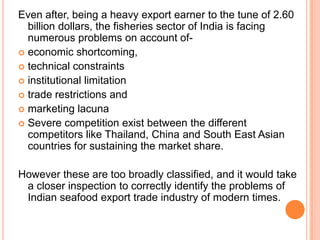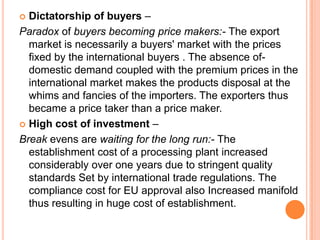India exports over $2.6 billion in seafood annually but faces many problems. Major issues for Indian seafood exporters identified in a 2009-2011 study include irregular raw material supply, high raw material costs due to competition, heavy competition in target markets, low processing plant capacity utilization, high production costs and low profits, price uncertainty, lack of buyer bargaining power, high investment costs, and lack of market and product information. Barriers to Indian seafood trade include import restrictions, tariffs from importing countries like the EU and US, and non-tariff barriers such as environmental and sanitary restrictions.















